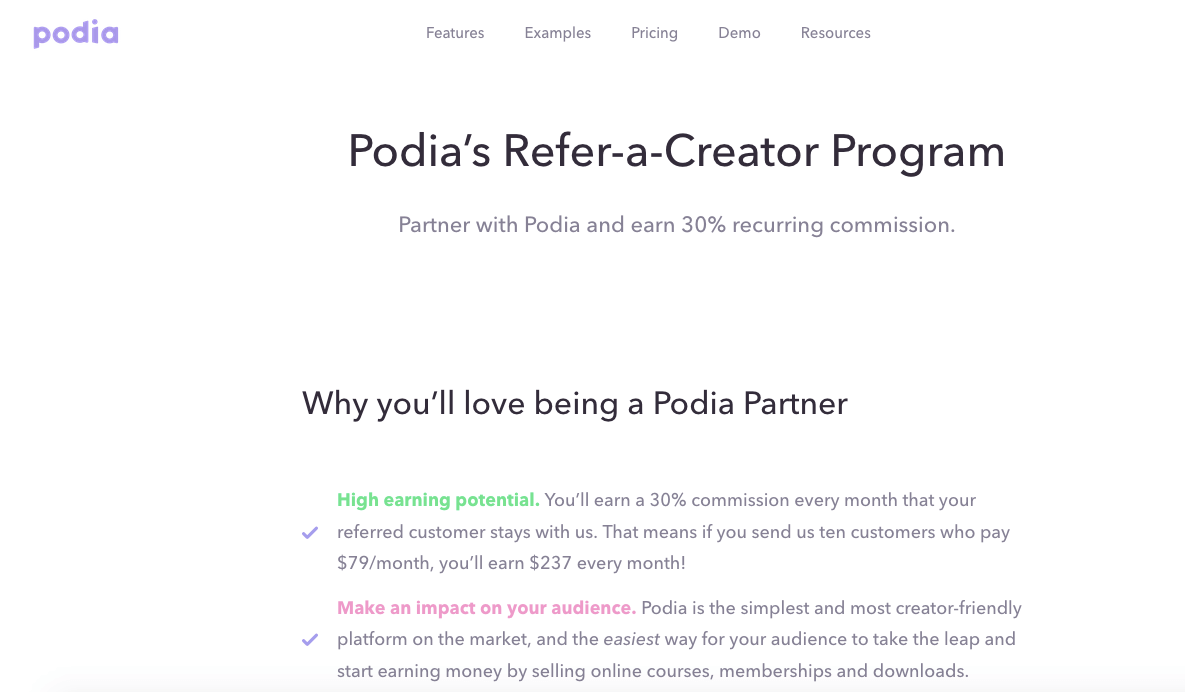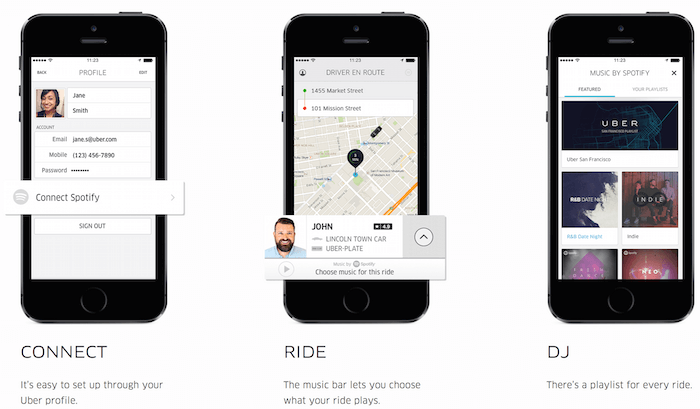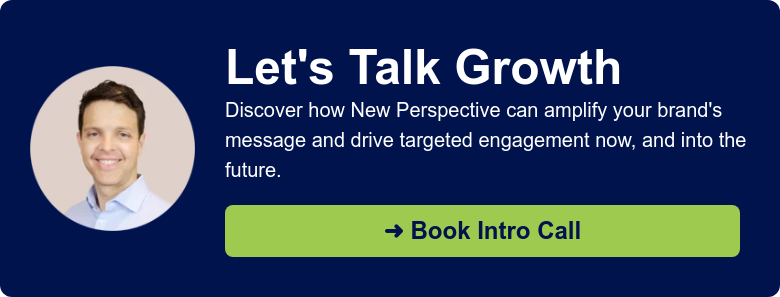An Inbound Channel Partner Marketing Approach

Times have changed: this generation of buyers has become skeptical of traditional advertising. As marketing evolves, finding new ways to grow business and get new clients is a must for companies. This is where developing a channel partner marketing program comes in.
From Apple to Google and Go Pro to Red Bull, brands from all over the world are already crushing it with brand partnership.
Read on to find out how inbound can help you collaborate with brands and increase your channel partners tenfold!
What Is a Channel Partner Marketing Program?
A channel partner marketing program is a business strategy that involves an alliance between two companies. Partners are encouraged to market or sell the other company’s products, services, or technologies while remaining independent.
The benefits of a successful partner program include:
- Increased Revenue: Partner programs offer a win-win situation for all parties. Businesses that engage in partner programs enjoy remarkable growth in sales of products or services.
- Rapid Testing: Channel partner programs present the opportunity to experiment with new customer audiences, promotions, products, and marketing campaigns in a low stakes environment.
- Build Trust: Getting endorsed by a well-known and trusted partner in your industry will empower your brand presence. Your alliance with them will automatically make your product seem more credible and trustworthy in the eyes of your customers.
- Enlarged Network: Each unique partnership creates a relationship of its own. When a brand allies with another company, they’re partnering with that company’s users and partners, growing their network as a result.
So how can inbound marketing help you develop a channel partner program and attract quality participants? Here’s what you will learn in this article:
- Key mindsets inbound marketers need to launch a successful partner program.
- Which steps to follow when defining your channel strategy.
- How to use inbound tactics to promote your program.
- What to measure when it comes to your partner program ROI.
Let’s get started.
Key Mindsets for a Successful Channel Partner Marketing Program
Put yourself in your channel partner representative’s shoes
Your channel partner’s mission is to present clients with a complete solution to their problems. This involves having product or service information readily available so that they can do their jobs effectively.
What educational support will you give to your representatives to ensure they can successfully promote your product?
Be easy to do business with
Ask yourself these questions:
- Is your partner program easy to follow?
- Is it easy to gain access to information, pricing, and technical support?
To answer these questions, make sure to sit down with your partner representatives and ask them how they expect to engage with your business. Make sure that your content is easy to find, actionable, and available on demand.
Get to know your own sales process
Before you teach others how to promote your product, you need to understand how to sell it yourself.
Before launching your partner program, define the stages of your buyer’s journey, the average length of a closed deal, and your customers’ buying triggers.
Understand your value proposition
Partners are looking to collaborate with companies whose services offer long-term financial rewards.
How will your product or service help other businesses achieve their goals, cut their cost per sales, and generate more revenue?
How to Outline Your Channel Partner Strategy
Choose Which Type of Channel Partner to Work With
Before choosing partners to network with, there are a couple of things to consider.
First and foremost, why are you building a channel partner marketing program? What are your goals? Having clearly established goals is vital to picking the right partner.
Next, consider the following factors:
- Their market: Before choosing a partner, consider if their consumer base would benefit from your product or service. Is their target audience the right fit when it comes to demographics and size? Does your product offer additional features and solutions your partner can’t presently provide?
- Strategic alignment: Your partner’s business strategy needs to be compatible with yours. There needs to be a natural point in their sales process for promoting your product or service.
- Marketing experience: What is your partner’s experience and expertise when it comes to marketing? Depending on how practiced they are, you may have to invest time and resources into training them before you collaborate.
- Synergic product lines: Do their product lines complement yours? Will you allow your partner to sell competitive products, or exclusively yours?
Need an example? Podia offers services to help content creators sell their courses or memberships online. What makes them stand out is their refer-a-creator program, which offers 30% commission every month to content creators for each referred client that stays with Podia.
This partner program is aligned with their product and their existing audience, which means that Podia took the time to do their research.

Define Which Products You Want to Sell
To design the perfect partner program, you must decide on which product or service you are going to promote. Here are three questions you should ask yourself before deciding which product is the best choice:
- Which product complements the potential partner’s existing services and generates more business for them? Analyze what is happening in your market. What type of product is already selling well in your industry? When forming a relationship with a potential partner, make sure to highlight all the benefits that come with the product you’re selling.
- Which product will most benefit your partner’s consumer base? Which products that you promote are best aligned with your partner’s current audience? How will you resolve the needs of their existing customers and win new business for their company?
- What is the expertise needed for each product? To ensure your partners can get familiar with your product quickly, it may be best to promote products that are easy to learn. If a product needs extensive training and knowledge to promote, then it might be best to let it go.
Choose an Operating Model for Your Program
Depending on your goals for your channel partner program, there are several operating models that you can choose. Here are the four main types to consider:
- VAR (Value-Added Reseller): A company that purchases a product, adds additional value by adding new features to the original product, and sells the latest offering to its customer base.
- ISV (Independent Software Vendor): An organization that develops and markets software solutions. Examples of this include Salesforce AppExchange and HubSpot Connect.
- Strategic Alliance: A strategic alliance is an agreement between two or more companies to pursue a set of goals while remaining independent.
- System Integrators: System integrators are companies that purchase individual hardware and software components from different manufacturers and integrate them into one customized solution for the client.
One great example of a successful operating model is Uber’s strategic Alliance with Spotify. How does it work? As users wait for their Uber ride to pick them up, they can login in to Spotify and choose which playlist they’ll listen to during the trip.
The approach helps create a better experience and gather more users for both companies.

After you go through the work of developing your program, you’ll need to begin recruiting potential partners—but don’t skip the research and planning step. Need help developing a channel partner program that aligns with your business goals? Reach out to us. New Perspective is a strategic partner that can help you develop a program designed around your business.
Already have a channel partner program? Then it’s time to move on and start promoting it
Promote Your Channel Partner Program with Inbound Marketing
Inbound marketing tactics are the most effective ways to attract potential channel partners. Crafting useful, relevant content for your audience while leveraging social media can boost awareness for your program, recruiting potential collaborators as a result.
Here are the top inbound tactics you should implement in your strategy to connect with potential partners:
Direct Message Companies on Social Media
Create personas of your ideal partner before reaching out on social media. Partner personas make it easier to filter which people are worth collaborating with.
Once you’ve created your partner persona, now’s the time to reach out to potential partners. Make sure you’re able to clearly state how your product will help them gain new business, generate higher revenue, and diversify their services.
Ask yourself these questions before reaching out to potential partners on social media:
- How will collaborating with you benefit their business?
- How are your products going to help grow their business and customer base?
- What benefits does your product or service offer that your competitors’ services don’t?
You can use social media to begin building a relationship with potential partners before you ever reach out to them. This can include following their blog posts, liking or sharing their posts, and adding insightful comments whenever possible.
Webinars
Education-based webinars provide information that resolves a need or problem for the audience.
Webinars present an excellent opportunity to attract new channel partners while establishing your credibility in the industry at the same time. The significant benefit that comes with webinars is their ability to reach many people from all over the world at one time with little overhead.
Need a webinar idea? Why not include partner-customer success stories? These can illustrate how your product has helped a customer while also assisting the partner in generating revenue.
Newsletters
A monthly newsletter to highlight feature updates and recent client success is a great way to attract partners to your channel program. Newsletters allow you to showcase your brand’s personality, personalize your message to existing customers, and drive traffic to your partner program landing page.
eBooks
More and more people are using iPads and smartphones to read books. Publishing an eBook on your website is a great way to promote your channel partner program.
Self-published eBooks—which can be created and made available for free—allow you to highlight your authority on a subject in greater length than a traditional blog post. Here are some ways that you can promote your eBook:
- Publish the eBook on your company blog.
- Promote it on your social media pages.
- Email it to people who’ve signed up for your newsletter.
- Send it as a bonus to a customer’s purchase.
Case Studies
Case studies highlight a customer’s need or problem and explain how your business came up with a solution. This gives potential partners a sneak-peek into how they can benefit from your channel partner program. Successful case studies are usually composed of:
- Challenges + How You Helped: Case studies offer in-depth information on the challenges and problems your customers faced, and how your partner program solved it. This can include what the customer has tried in the past and what separates your product from the rest.
- Client Quotes: Case studies often include quotes from clients who have used your product or service. Client quotes provide social proof to your partners, confirming that they’re making the right choice.
- Measurable Stats: Nothing is more convincing than numbers. Make sure that you use relevant statistics in your study to demonstrate your program’s effectiveness.
- Call-To-Action (CTA): End your case study with a couple of sentences that relate to your product or service. The final paragraph should encourage partners to contact your business or sign up for your program.
Email Marketing
Email marketing is frequently used as a tool to strengthen a brand’s relationship with current/previous clients or to acquire new customers. It can also be used to target specific people in your industry to create awareness around your channel partner program. Effective email marketing must be:
- Valuable: Partners don’t care about your company or program—they want to know how you can solve their challenges. Focus on sharing useful content that will resonate with them.
- Relevant: Make sure that you’ve segmented your database based on demographics and behavior to ensure you’re sending the message to the right person at the right time.
- Expected: Make sure your email is expected by maintaining consistent communication. Analyze your subscriber’s behavior and send your pitch when they most anticipate it.
- Integrated: Email marketing works best when it’s combined with the rest of your marketing efforts. Integrating email with other data software is great when it comes to gathering statistics on how well your email marketing efforts are performing.
Measure Your Channel Partner Program ROI
Looking to measure your success? Here’s the essential metrics to use for measuring your return on investment (ROI):
Channel Sales Recruitment Metrics:
- Total Number of Partners: How many partners have you been able to recruit this past month or quarter?
- Recruitment Quota Attainment: How far or close are you to achieving your recruitment goals?
- Average Cost of Recruiting New Partners: How much do you have to invest financially to recruit new partners?
- Percentage of Partners Recruited by Channel: For example – 45% from webinars, 30% from email marketing and 25% from referrals.
Channel Sales Success Metrics:
- Average Revenue Generated Per Partner: Tracking the revenue that your partner is generating is the first step to improving your sales engagement.
- Average Partner Satisfaction: Tracking your partner’s satisfaction is a good indicator that your product is producing results.
- Percentage of Partners Who Completed Training: What percentage of your partners have accomplished the training you offered?
- Average Sales Cycle Length: How long does it take for your sales partners to close a sale?
Channel Sales Profitability Metrics:
- Channel Retention Rate: Tracking the percentage of people who’ve stopped selling your products is essential to keep a handle on the situation.
- Program Cost to Revenue: How much revenue are you generating overall compared to your program cost?
- Average Profit Margin: How much average profit is generated from the sale of your product?
- Revenue Growth Rate of Partner Tiers: This shows how partners are growing across various product lines and can help you make productive decisions on resource allocations.
Using Inbound Marketing to Expand Your Channel Partner Marketing Program
Are you ready to crush your channel partner marketing campaign?
By following the strategy above, you can put together a working partner program that will energize your team, recruit top-level partners, and set you miles apart from your competition.
Need some help to set up your channel partner program? Reach out to us! We’ll work with you to make the most of these strategies and create a channel partner marketing program that will help you win more business! Contact us today.




